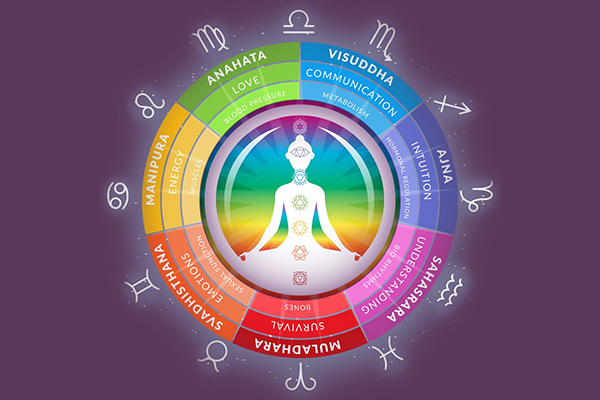
The origins of chakras are derived from the Vedic writings, ancient sacred scriptures composed between 1500 and 1000 BC. These ancient texts underscored the intricate connection of an individual's physical, mental, and spiritual well-being. The term 'Chakra' in Sanskrit means 'wheel' or 'disc.' Chakras can be envisioned as spinning vortices or wheels of cosmic energy, where matter converges with prana (life force). The Upanishads and Tantric traditions, particularly the Shat-Chakra Nirupana and Hatha Yoga Pradipika, assert that chakras are essential for sustaining the flow of prana via the body's channels, referred to as 'nadis.' These energy centers facilitate equilibrium between the physical and ethereal bodies, promoting wellness and spiritual development.
The principles of chakras are relevant to individuals pursuing holistic health, self-empowerment, and spiritual enlightenment. Each chakra is associated with distinct facets of human experience, including survival, creativity, power, love, communication, intuition, and higher awareness.
Chakras become obstructed not only by life's adversities but also owing to many internal and external factors. Emotional trauma, unprocessed experiences, physical injuries, chronic stress, unfavorable thought patterns, toxins from the environment, inadequate lifestyle choices, and ancestral or karmic imprints can block the flow of energy. These obstructions hinder the flow of prana (life force) and result in emotional, mental, and bodily imbalances that might impact well-being.
How many Chakras are there?
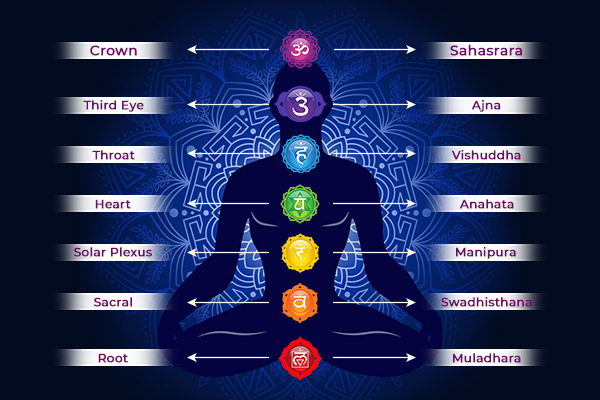
The human energy system comprises 114 chakras, of which two are external to the physical body, while the remaining 112 are internal. Among all the chakras, only 108 can be actively cultivated through spiritual activities, while four of these chakras spontaneously activate due to profound transformation. The number 108 is significant in both the human body and the cosmos. It denotes the distance from the Earth to the Sun, equivalent to 108 times the Sun's diameter. The distance from Earth to the Moon is 108 times the Moon's diameter. The Sun's diameter is 108 times greater than that of the Earth. The importance of the number 108 in diverse spiritual traditions arises from its cosmic association.
To have a fulfilling, healthy, and socially engaged life, an individual needs the activation of 21 chakras. The 21 chakras are linked to three primary energy channels: Pingala, Ida, and Sushumna. They are categorized into seven groups of three chakras each, representing seven planes of life, and constitute the foundation for the seven schools of yoga. When all seven primary chakras function optimally, an individual will enjoy a sense of completeness in their physical, emotional, and mental health. The seven principal chakras correspond to distinct regions of the spine, extending from the sacrum to the crown of the skull.
The seven primary chakras are:
Muladhara Chakra (Root Chakra)
Swadhisthana Chakra (Sacral Chakra)
Manipura Chakra (Solar Plexus Chakra)
Anahata Chakra (Heart Chakra)
Vishuddha Chakra (Throat Chakra)
Ajna Chakra (Third-Eye Chakra)
Sahasrara Chakra (Crown Chakra)
Introduction to the 7 Chakras
The seven chakras function as energy portals within the human body, symbolizing various aspects of our physical, emotional, and spiritual existence. These energy centers function as a crucial connection between the individual and the cosmos, enabling us to perceive the profound nature of existence. Each chakra, from the root to the crown, serves a unique function in influencing our identity and interactions as we navigate through life. Comprehending and equilibrating these chakras leads to enhanced harmony, healing, and improved balance between the internal and external realms.
Root (Muladhara) Chakra
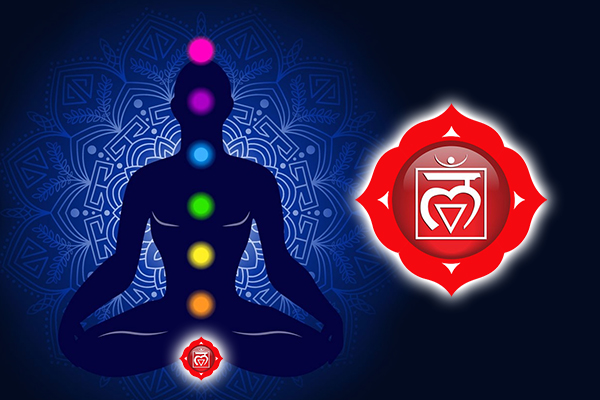
Blocked by: Residing in an illusory realm and lacking practicality and realism. Always concerned with financial issues and support. Laziness and avoiding life's challenges.
Unblocked by: You become practical, grounded, and prepared for challenges.
Physical imbalances result in complications affecting the legs, rectum, the pelvic region, male reproductive organs, and prostate gland.
Emotional imbalances manifest as feelings that affect essential survival needs, including financial stability, housing, health, and the ability to meet basic life requirements.
Location: At the base of the spinal cord.
Color: Red
Frequency: 396 Hertz
Mantra: Lam
Regulatory System: Skeletal System.
Regulatory Organs: Legs, Hips, Arteries.
Diseases: Arthritis. Obesity. Sciatica.
Swadhisthana Chakra (The Sacral Chakra)
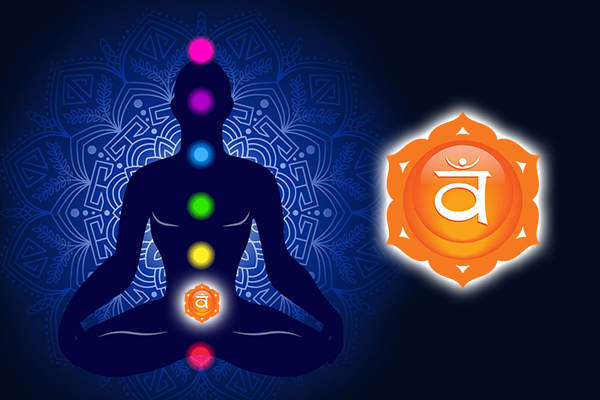
Blocked by:
Fears, guilt, a perception of insufficiency or lack of appreciation, and a sense of persistent resentment.
Unblocked by:
Establishing an anchor in your core, experiencing a carefree life, and feeling valued, cherished, and unique.
Physical imbalances:
Sexual and reproductive disorders, urinary complications, renal infections, large intestine malfunction, and lumbosacral pain.
Emotional imbalances:
Resistance to interpersonal commitment, reluctance to express feelings, sexual dependence, and substance abuse.
Location:
Just below the navel.
Color:
Orange.
Frequency:
417 Hertz.
Mantra:
Vam.
Regulated System:
Reproductive and muscular systems.
Regulated Organs:
Sexual organs, kidneys, intestines.
Diseases:
Lower back pain, muscle pain, reproductive disorders, and kidney infections.
Solar Plexus (Manipura) Chakra
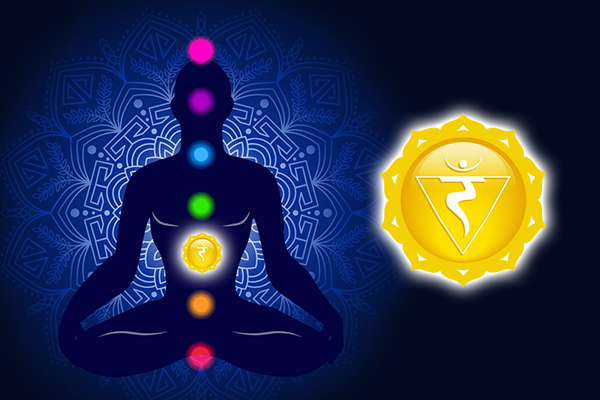
Blocked by: A refusal to release suppressed anger, resentments, or traumatic memories from the past. Consistently experiencing anxiety for the future while feeling helpless.
Unblocked by: Embracing the present and releasing the past. Feeling of self-respect and confidence while actively influencing others and circumstances to align with your objectives.
Physical imbalances: Digestive disorders, liver issue, chronic fatigue, gastric ulcers.
Emotional imbalances: Concerns related to authority, self-discipline, and self-esteem.
Location: At the navel.
Color: Yellow.
Frequency: 528 Hertz.
Mantra: Ram.
Regulatory System: Digestive system.
Regulatory organs: Stomach, small intestine, gallbladder, liver, spleen.
Diseases: Gastro-esophageal reflux disease (GERD), liver disorders, chronic fatigue, stomach ulcers.
Heart (Anahata) Chakra
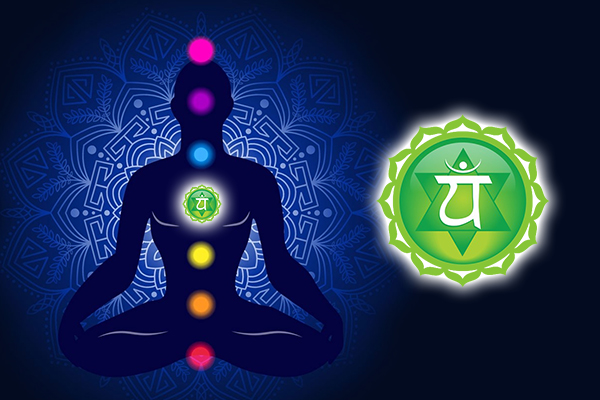
Blocked by: Mistrust, inability to forgive others, expectations, grief, and unhappy relationships.
Unblocked by: Being open to trusting others and expressing unconditional, selfless love.
Physical imbalances: Heart and lung diseases, cholesterol issues, and lymphatic system problems.
Emotional imbalances: Jealousy, neglect, anger, and feelings of hurt and grief.
Location: End of the central sternum.
Color: Green.
Frequency: 639 Hz.
Mantra: Yam.
Regulatory System: Cardiovascular system.
Regulatory Organs: Heart, Lower Lungs.
Diseases: Heart disease, allergies, fever.
Throat (Vishuddha) Chakra
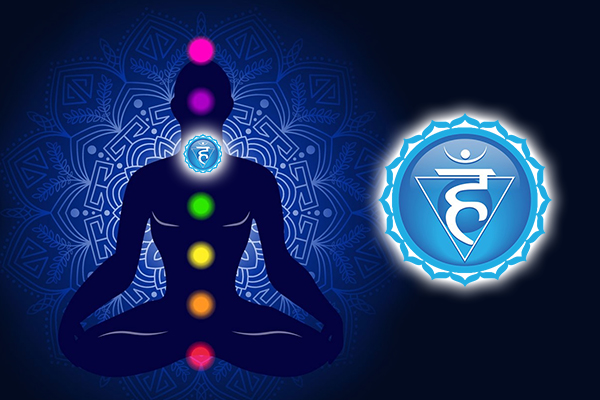
Blocked by: Lack of understanding and failing to express one's uniqueness.
Unblocked by: Easily speaking the truth, communicating effectively, and recognizing your individuality.
Physical imbalances: Thyroid problems, sore throats, laryngitis, ear infections, neck and shoulder pain.
Emotional imbalances: Blockages in communication, low willpower, frustrations, helplessness, and a lack of direction in life.
Location: In the throat pit.
Color: Blue.
Frequency: 741 Hz.
Mantra: Ham.
Regulatory System: Respiratory and communication systems.
Regulatory Organs: Ears, mouth, jaws, tongue, pharynx, palate, shoulders, and neck.
Diseases: Thyroid problems, sore throat, immune system issues.
Third Eye (Ajna) Chakra
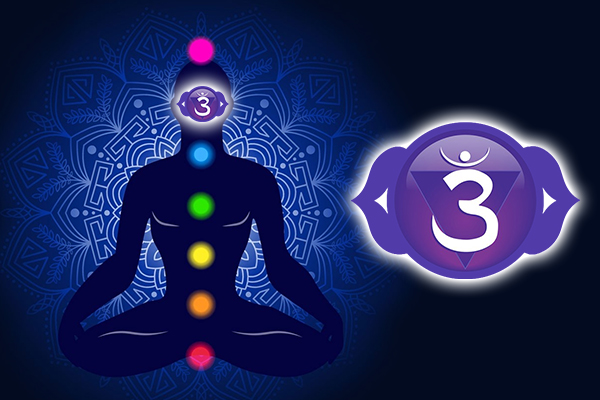
Blocked by: Ego, rigidity, and seriousness.
Unblocked by: Simplicity and acceptance of the way things are.
Physical imbalances: Headaches, hazy vision, sinus problems, hormonal imbalances.
Emotional imbalances: Irritability, impulsivity, and stubbornness.
Location: In the brain, right behind the eyebrow center.
Color: Indigo.
Frequency: 852 Hz.
Mantra: Om.
Regulatory System: Nervous system.
Regulatory Organs: Eyes, nose, ears, sinuses, cerebellum, pineal gland, forebrain.
Diseases: Vision and sinus issues, headaches, hormonal imbalances.
Crown (Sahasrara) Chakra
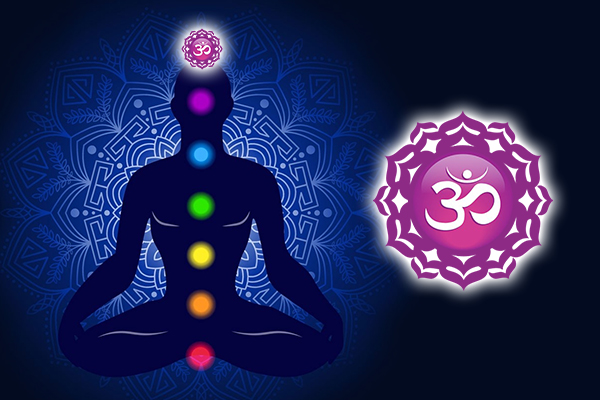
Blocked by: Severe discontentment towards life.
Unblocked by: Expressing contentment and gratitude.
Physical imbalances: Depression, inability to learn, sensitivity to light, sound, and the surrounding environment.
Emotional imbalances: Apathy, disconnection from others, lack of purpose, and a feeling of alienation.
Location: At the crown of the head.
Color: Violet.
Frequency: 963 Hz.
Mantra: Ng.
Regulatory System: Brain function.
Regulatory Organs: Brain, pituitary gland.
Diseases: Skin problems, ADHD, depression, Parkinson's disease.
Some Lesser-Known Chakras
The Hrit Padma chakra, located just below the heart chakra, is commonly recognized as the epicenter of infinite love and compassion, commonly referred to as the 'Sacred Heart.' This energy center represents a deep connection to spiritual sentiments and divine affection. The Thymus chakra is located between the heart and throat chakras. It connects to the strength of the immune system and emotional healing, often known as the 'Higher Heart' chakra. The lesser-known chakras, distinct from the seven primary chakras is essential for physical and spiritual balance, form a powerful triangular energy dimension in the heart area, linking the Heart (Anahata), Sacred Heart (Hrit Padma), and Higher Heart (Thymus) chakras. Their energies combine to promote emotional healing, compassion, and spiritual love, resulting in an enhanced connection to our emotional and physical well-being and deeper relationships. This dynamic triangle is often examined by seasoned practitioners for profound emotional and spiritual exploration that transcends the primary energy centers.
Sacred Heart (Hrit Padma) Chakra
-Chakra_136125.jpg)
Blocked by: Selfishness, low self-worth, and the need for control.
Unblocked by: Selflessness, unconditional love, and spiritual connection.
Physical imbalances: High blood pressure, diabetes, and circulatory issues.
Emotional imbalances: Bitterness, resentment, and difficulty letting go.
Location: Two finger breadths below the left rib cage.
Color: Magenta.
Frequency: 700 Hz.
Mantra: Hoom.
Regulatory System: Circulatory system.
Regulatory Organs: Heart, pancreas.
Diseases: Diabetes, heart disease, high or low blood pressure.
Higher Heart (Thymus) Chakra
-Chakra_136126.jpg)
Blocked by: Intolerance and rigidity in accepting oneself and others.
Unblocked by: Ability to trust life and its flow.
Physical imbalances: Infections, recurring illnesses, chest tightness, sore throat, persistent skin conditions, and difficulty breathing.
Emotional imbalances: Getting affected easily, difficulty letting in and fear of vulnerability.
Location: Between the Vishuddha (Throat) and Anahata (Heart) Chakras, near the sternum.
Color: Aquamarine.
Frequency: 352 Hz.
Mantra: Hum.
Regulatory System: Immune system.
Regulatory Organs: Lungs, nerves, thymus gland.
Diseases: Asthma, autoimmune diseases, bronchitis, pneumonia.
Importance & Significance of Chakras
Aligned and activated chakras allow energy flow within the body, enabling individuals to transcend regular awareness and connect with their higher self or universal consciousness. Kundalini signifies a latent spiritual energy located at the base of the spine, often displayed in this journey. Meditation, breathwork, and mantra chanting can activate energy, ascending through the chakras to promote spiritual awakening, inner insight, and enlightenment. Chakras are energy regulating points that function as portals to self-realization and spiritual empowerment.
Maintaining balance to the chakras facilitates unhindered energy flow, providing physical vitality, emotional resilience, and mental clarity. Understanding the chakras allows individuals to participate in their healing and spiritual development, employing ancient knowledge to navigate the complexity of contemporary life with purpose and harmony. The chakra system is an essential instrument for individual and collective wellness.
Balanced v/s Imbalanced Chakras
Calibrated chakras allow uninterrupted energy flow, thereby improving physical health, emotional stability, mental clarity, and spiritual connection. An imbalance in your chakras affects the flow, resulting in physical, emotional, and mental challenges. Understanding the difference between balanced and imbalanced chakras enables the enhancement of your well-being and the attainment of harmony in your life.
A balanced chakra operates efficiently, positively impacting the domains of life it governs. A healthy root chakra fosters security and stability, generating a sense of grounding, safety, and confidence in one's environment. An optimal heart chakra fosters love, compassion, and emotional openness. A balanced throat chakra facilitates proficient conversation and genuine self-expression. Achieving balance entails aligning with your bodily, emotional, and spiritual requirements, so enhancing your capacity to navigate life's problems with ease. Balanced chakras promote harmony, revitalizing you, stabilizing your emotions, and expanding spiritual connection.
Imbalanced chakras might interfere with multiple aspects of your life. A chakra may be underactive, signifying a blockage or dysfunction, or overactive, resulting in dominance and excess energy. An underactive solar plexus chakra may lead to diminished self-esteem, a lack of motivation, or sensations of powerlessness. An excessively active solar plexus may lead to hostility, dominance, or controlling tendencies. Imbalanced chakras may result in physical manifestations such as gastrointestinal disturbances, cephalalgia, or lethargy. You may experience anxiety, panic, or frustration. An obstructed chakra might result in a sense of stagnation in specific aspects of your life, impeding advancement.
Achieving equilibrium among chakras is essential for holistic health. Rudraksha, meditation, yoga, breathwork, and energy healing modalities like Reiki proficiently restore chakra balance. Utilizing certain crystals, essential oils, or sound frequencies for each chakra might facilitate the unblocking or soothing of hyperactive chakras. Balancing chakras necessitates mindfulness, self-nurturance, and deliberate healing for a harmonious and satisfying existence. Balancing your chakras is crucial for surmounting emotional obstacles and improving physical health, resulting in comprehensive well-being of the mind, body, and spirit.
Benefits of Chakra Balancing
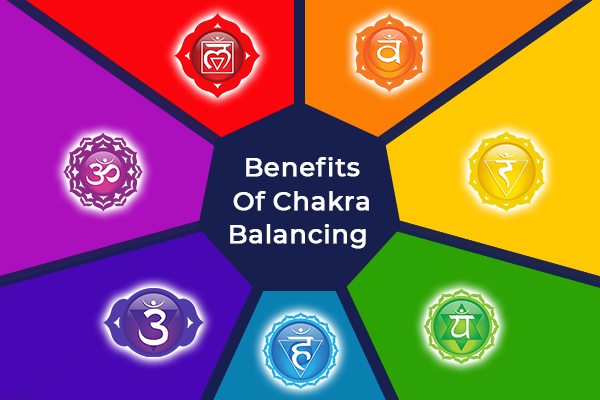
Chakra balancing provides benefits for physical, emotional, mental, and spiritual well-being. Aligned chakras facilitate unobstructed energy flow, hence benefiting physical health by alleviating tension, augmenting immunity, and increasing vitality. Equilibrated chakras foster inner tranquilly, enhancing calm, emotional resilience, and reducing anxiety or fear. This alignment improves mental clarity, enhancing focus, decision-making, and creativity while fostering positive thought patterns.
Root Chakra (Muladhara): You experience security and confidence in your environment and material requirements. A profound sense of stability, security, and connectedness to mother earth.
Sacral Chakra (Swadhisthana): You exhibit openness, creativity, and value relationships. You indulge in pleasure without remorse and express your sexuality and feelings openly.
Solar Plexus Chakra (Manipura): It signifies an expression of confidence, strength, and ambition. You assert authority, make judgements effortlessly, and exhibit powerful self-esteem and determination.
Heart Chakra (Anahata): You experience compassion, love, and balance in your emotions. You willingly exchange love, leading to healthy and supportive partnerships.
Throat Chakra (Vishuddha): You communicate effectively, convey truthfully, and express yourself with clarity. You attentively consider others' viewpoints and firmly express your own perspectives.
Third Eye Chakra (Ajna): You possess keen intuition, incisive insight, and precise mental focus. You cultivate spiritual awareness, perceive beyond superficial behaviour, and depend on your own guidance for decision-making.
Crown Chakra (Sahasrara): You experience a link to the cosmos and a sense of oneness with all sentient beings. You embody tranquilly, intention, and illumination.
Chakra equilibrium improves the capacity to confront adversities with poise, resulting in a peaceful, purpose-oriented existence where inner tranquilly and external achievement coexist.
How to balance Chakras?
Achieving chakra health requires a focus on the physical form and energetic domain through intentional efforts. Here are efficient techniques to realign and balance your chakras:
Meditation
Meditation proficiently harmonizes chakras. Contemplate each chakra individually, envision its corresponding color (red for the root chakra, green for the heart chakra), and perceive energy circulating unobstructed to eliminate blockages.
Yoga
Yoga postures stimulate and harmonize different chakras. Grounding postures, like mountain pose and warrior pose, fortify the root chakra. Heart-opening postures such as camel stance and cobra pose stimulate the heart chakra. A consistent yoga practice harmonizes chakras and fortifies the body-mind connection. Activities that engage the body, such as dancing or wandering in nature, help realign your energy centers.
Pranayam
Breathing exercises facilitate the flow of prana via the chakras. Deep abdominal breathing, alternate nostril breathing, and Kapalabhati breathing eliminate obstructed energy and foster balance.
Affirmations
Positive affirmations can effectively transform negative thought patterns associated with each chakra. Repeating affirmations like “I am safe and secure” for the root chakra or “I articulate my truth with clarity” for the throat chakra harmonizes the energy of each chakra, fostering a constructive flow of thoughts and emotions.
Nutrition and Diet
Ingesting meals that correspond to the color and energy of each chakra helps facilitate their equilibrium. Root vegetables and proteins strengthen the root chakra, while leafy greens nurture the heart chakra. Hydration and nutrient-rich foods optimize energy circulation, ensuring the nourishment of all chakras.
Emotional Self-Care
Unresolved emotional issues can obstruct energy flow, resulting in imbalances. Activities like writing or discussions with a confidant can mitigate emotional strain. Consistent self-care activities such as bathing, nature treks, and artistic expression sustain balanced and nurtured energy.
Sound Therapy
Specific sound frequencies and vibrations help align chakras. Singing bowls, tuning forks, gongs, and binaural beats are frequently used for chakra alignment. Every chakra vibrates at a certain frequency and engaging in auditory or vocalization of the associated sound can aid in re-establishing equilibrium.
Root Chakra: 396 Hz
Sacral Chakra: 417 Hz
Solar Plexus Chakra: 528 Hz
Mantra Meditation
Each chakra corresponds to a bija mantra (seed sound), and the recitation of these mantras can stimulate and equilibrate the chakras.
Root Chakra: ' Lam'
Sacral Chakra: 'Vam'
Solar Plexus Chakra: 'Ram'
Heart Chakra: 'Yam'
Throat Chakra: 'Ham'
Ajna Chakra: 'Om'
Crown Chakra: 'Ng'
Color Therapy
Each chakra is associated with a distinct color; so, immersing oneself in various colors via attire, lighting, or visualizations helps facilitate chakra balance. For instance:
Wearing or visualizing red supports the root chakra.
Immersing oneself in green promotes the healing of the heart chakra. Color meditation, which involves visualizing the color of the chakra while concentrating on the corresponding location, aids in its unblocking.
Aromatherapy
Essential oils and incense associated with each chakra can facilitate healing and balance. Various aromas activate or soothe chakras:
Root Chakra: Patchouli, cedarwood, sandalwood.
Sacral Chakra: Ylang-ylang, orange, jasmine.
Solar Plexus Chakra: Lemon, ginger, chamomile.
Heart Chakra: Rose, lavender, and geranium.
Throat Chakra: Eucalyptus, peppermint, chamomile.
Third Eye Chakra: Frankincense, Clary Sage, Juniper.
Crown Chakra: Lotus, lavender, sandalwood.
Visualization & Guided Imagery
Guided meditations that involve visualizing energy passing each chakra or visualizing radiant light in their respective colors might augment chakra healing. Envisioning a rotating red wheel at the base of your spine stimulates the energy of the root chakra.
Mudras
Hand movements (mudras) are employed during meditation to enhance energy flow via designated chakras.
Root Chakra: Muladhara Mudra
Sacral Chakra: Shakti Mudra
Solar Plexus Chakra: Rudra Mudra
Heart Chakra: Anahata Mudra
Throat Chakra: Granthita Mudra
Third Eye Chakra: Ajna Mudra
Crown Chakra: Sahasrara Mudra
Daily incorporation of these activities can restore balance to your chakras, hence improving physical health, emotional stability, cerebral clarity, and spiritual growth. Chakra balancing is an ongoing practice of self-care and mindfulness that promotes enduring balance and wellness.
About Rudraksha Ratna Chakra Therapy
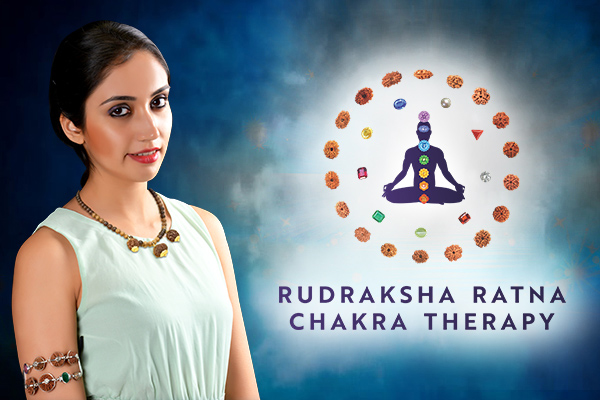
Rudraksha Ratna Chakra Therapy (RRCT) represents a holistic approach to healing and well-being, integrating the therapeutic properties of Rudraksha beads and natural gemstones (Ratna) that combines different Mukhi Rudraksha beads with gemstones in a patented stringing method to target and heal various Chakras, thus maximizing the therapeutic benefits of wearing Rudraksha.
This methodology considers not only the emotional and physical aspects of each person, but also their energetic concerns. By wearing Rudraksha combinations according to this method, individuals can harness the full potential of rudraksha to balance the body's energy centers. Once you begin wearing Rudraksha according to Rudraksha Ratna Chakra Therapy (RRCT), you will notice its effects on your chakras in a relatively short period, typically within 3 to 8 days. Within the first 10 days of wearing it, you may experience a noticeable difference in both your emotional and physical well-being.
Conclusion
In conclusion, understanding the seven chakras and their meanings reveals the link between physical, emotional, mental, and spiritual health. Each chakra is an energy center that affects security, creativity, love, communication, and connection to higher consciousness. Balanced chakras promote harmony and enhance overall health, emotional resilience, mental clarity, and spiritual awareness. Imbalances can lead to blockages, causing physical discomfort, emotional turmoil, or spiritual disconnection. Learning about your chakras and their effect on your well-being fosters self-awareness and personal growth. Rudraksha Ratna Chakra Therapy, along with meditation, yoga, dietary changes, and other introspective practices, helps you work with your chakras, clear blockages, and realign your energy. Chakra awareness enables control over your inner world, transforming challenges into opportunities for healing and growth. This fosters a balanced, healthy, vibrant, and successful life.


-in-Astrology.jpg)
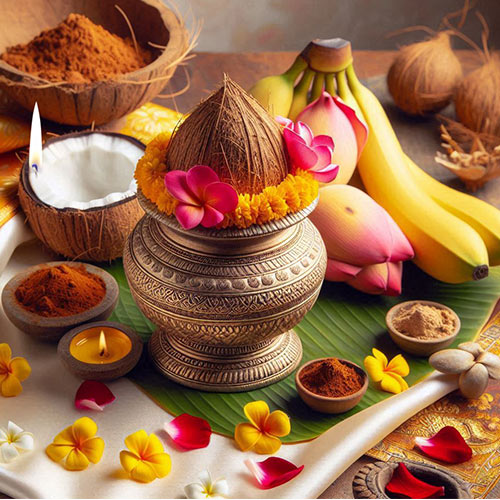
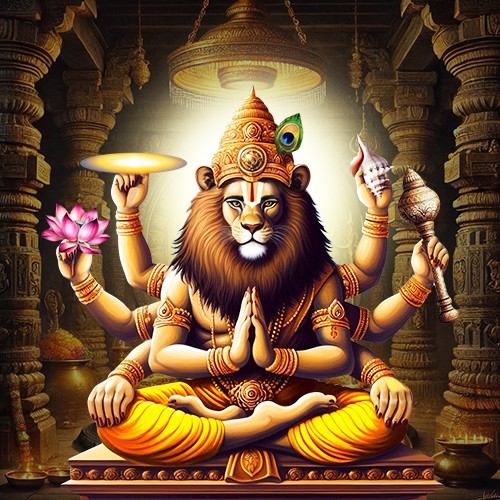

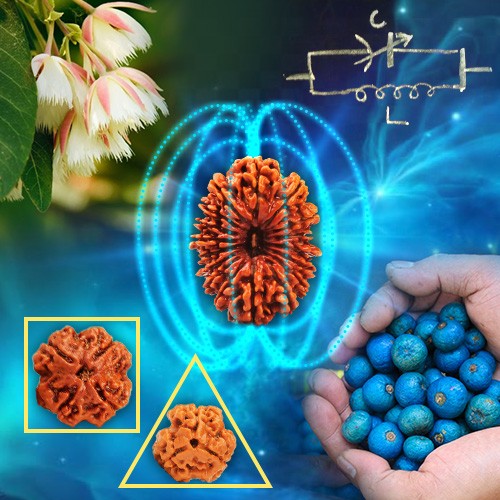

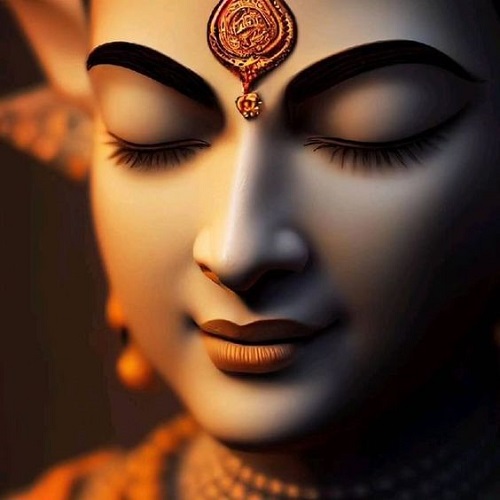
.jpg)

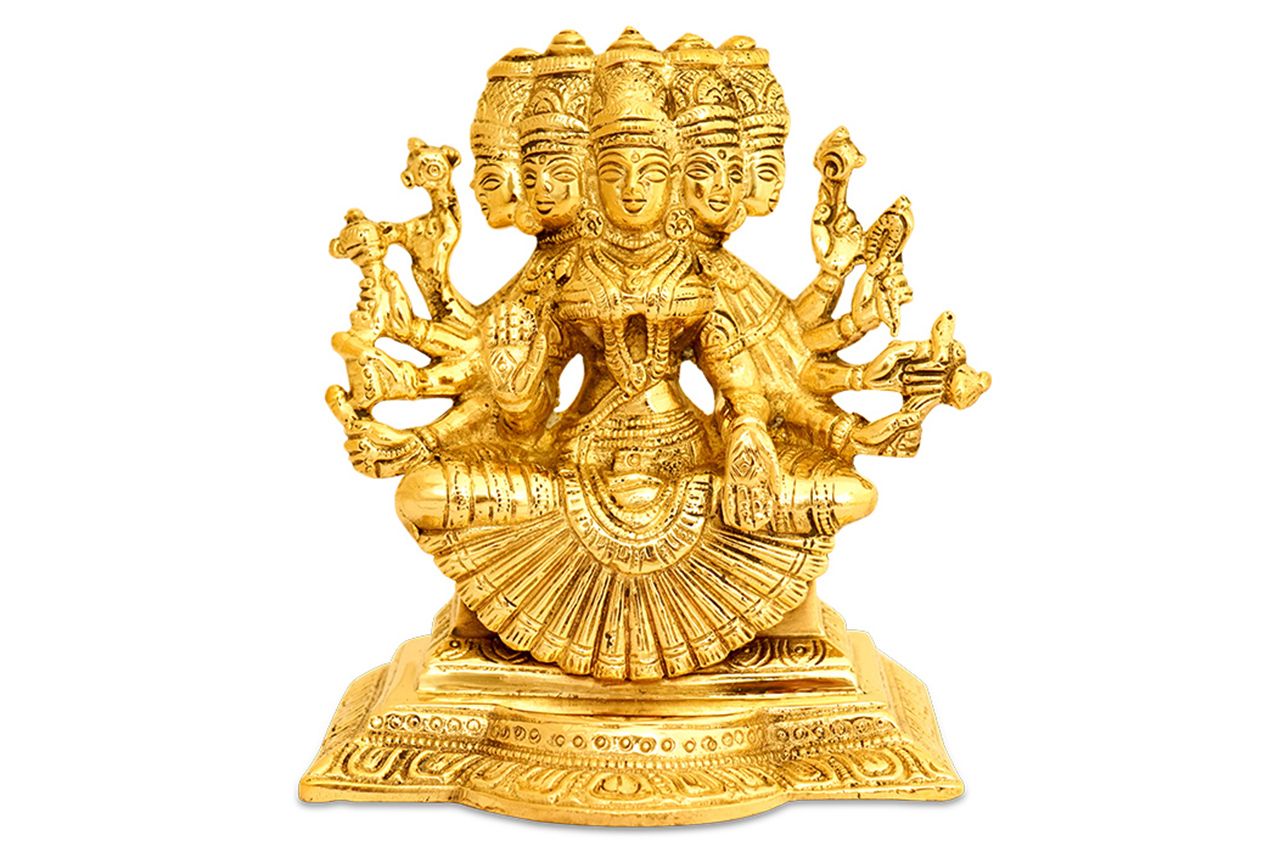
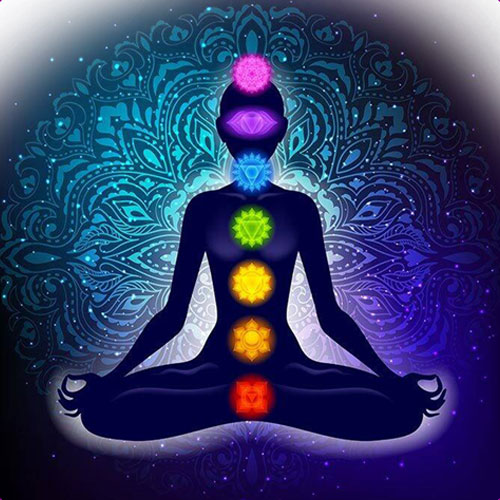
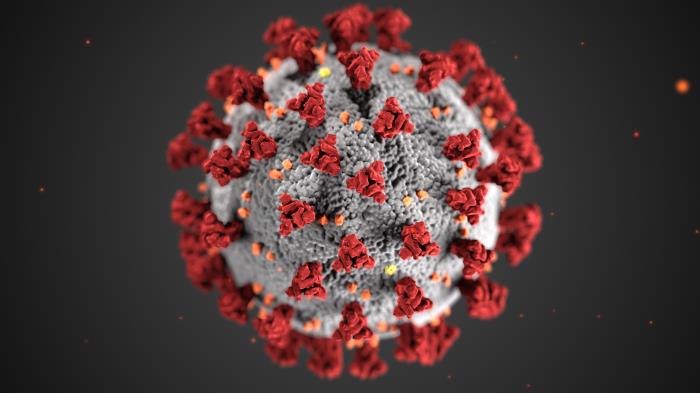
Comments 0
Leave your thought here